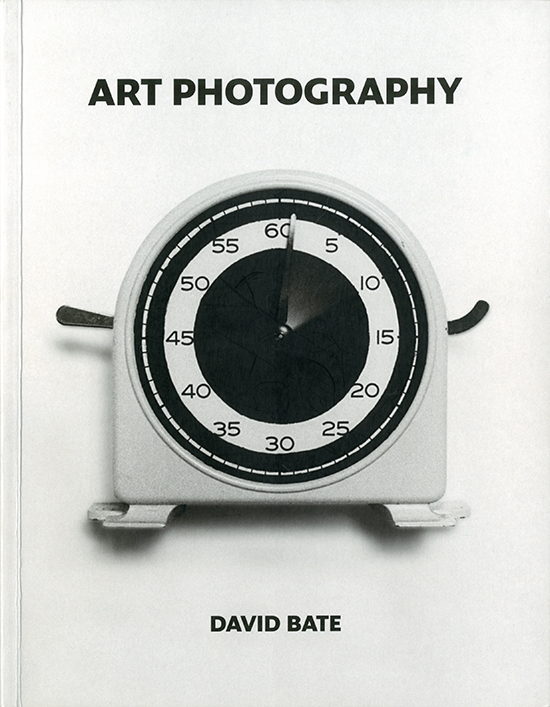| SIMON DENISON IMAGE & TEXT |
| PREVIOUS | NEXT |
ART PHOTOGRAPHY David Bate TATE PUBLISHING, 2015 ISBN 978-1-84976-224-3 Pb
In the century and a half since artist photographers such as Rejlander and Robinson began displaying their work, photography has evolved and proliferated in multiple ways as an art practice, and this short book, commissioned by the Tate, attempts to make sense of some of them. It is an ambitious task and David Bate sets about it by discussing art photography in terms of the idea of photography, pictorialism, documentary style, conceptualism, archive art and representation of space. The book is dense with information and ideas, much of it fascinating and provocative. The chapter on the idea of photography moves beyond the well-known 16th and 17th century uses of the camera obscura as a painter’s aid and reveals its early uses in science and entertainment as well as art; a range of functions that, Bate tells us, is ‘exactly what photography also inherited’. Robert Hooke’s suggestion to the Royal Society in 1694 that travellers might use his ‘picture box’ to record the ‘true forms and shapes’ of what they see while abroad intriguingly predicts the picture-collecting habits of the modern tourist. A section on Talbot and Daguerre reminds us that ideas around photographic seeing, transformation and reverie – ideas that remain central to debates around the nature and value of photography and the value of art – were part of photographic discourse from the beginning. Pictorialism is granted a long-overdue rehabilitation; seen not as a dead end, as modernists have sneered for a century, but as a continuing tradition that has become one of the dominant forms of contemporary practice. Bate focuses on one aspect of pictorialist work, namely the staged tableau, a practice with a long art history predating photography; and emphasises what he sees as its critical tendency even in its early days. This is interesting but truer perhaps of modern staged photography than of early pictorialist work, most of which – where it can be read as socio-cultural commentary at all – was surely more a statement of conservative values and a reaction against contemporary conditions than a critique. Documentary is never ‘pure’, Bate reminds us, since it always prompts associative lines of thought, even imaginary dramas in the mind of the viewer. The effect of scrutinising documentary style photographs is to be caught in tension between the ‘curiosity of the detective’ and the ‘guilt felt by every voyeur’: an intriguing thought. A different kind of tension is seen as having its origin in Walker Evans’s overt claims to authorship of his projects, namely the everlasting mirrors/windows debate within documentary photography which asks: is the work more about the photographer or the world? Although we readily recognise the non-transparency of photography and however much photo-artists find new ways to emphasise it, Bate notes that we can nonetheless appreciate the ‘authentic’ quality of Google Street View imagery made by an automated process, and of artworks derived from Google materials. The chapter on pictorial space leans heavily on Foucault’s idea of heterotopia, an unstable conceptual space, both here and not-here, that contains the potential for its own disruption and collapse. There is much that is interesting in this, not least the number of art photographs that can be said to depict the locations where such spaces are conceived (such as cinemas, fairgrounds, holiday sites and libraries). The immersive experience of looking at visual depictions of space is itself proposed as heterotopic; and Bate seems to imply (if he doesn’t quite say) that part of the appeal of photography among wider art practices is that photography’s indexicality provides a grounding to otherwise unstable heterotopic imagination. If there is a theme linking all this together, it is that art photography has 'not followed' the idea that 'photography is about showing the world as it is'. Bate elaborates this by drawing on Jacques Rancière’s term 'dissemblance', used in The Future of the Image to contrast with 'resemblance'. Bate interprets dissemblance to imply conceptual disruption, a challenge to conventional thinking; and states that his aim in the book is to 'explore these artistic operations of dissemblance as they have specifically operated through photography in art'. This approach accounts for many of Bate's emphases and his selection of examples. However, it does not provide the all-encompassing account of art photography that the book's title seems to promise. It overlooks, for example, the art of sensual experience which the young Susan Sontag asked us to recognise; and the art that calms, offering reassurance and consolation through the transfiguration of content by form, as advocated by Robert Adams. It does not account fully for art photographs that operate through pictorial transformation, from Kertesz and Cartier-Bresson to Winogrand, Eggleston and others; nor for the photography of the long look, which we see in Davies, Sternfeld or Shore. It neglects photography that becomes art by virtue of time, offering up meditations on Barthes’ noeme of that-has-been. It also explicitly discounts all the art photography which does seek to present ‘the world as it is’, or at least as it is seen by the photographer, such as the work of the great explorer-collectors like Tom Wood, or critical realists like Diane Arbus and Simon Norfolk. Nevertheless, within its self-determined limits the book offers many insights, particularly through striking readings of individual photographs. An example is Bate’s contextually-aware reading of Robinson’s 1872 A Gleaner, typically regarded as a sentimental and faintly ludicrous concoction. Bate recognises its artificiality but sees it as 'articulating the new potentials of leisure for [Robinson's] class' in the age of railway travel, 'an idealised version of what a middle-class family might enjoy on a daytrip to the country: gathering twigs for a cosy fire'. This and many other illuminating readings provide a justification for Bate's framing and are this book's greatest strength. |
 |
|---|---|